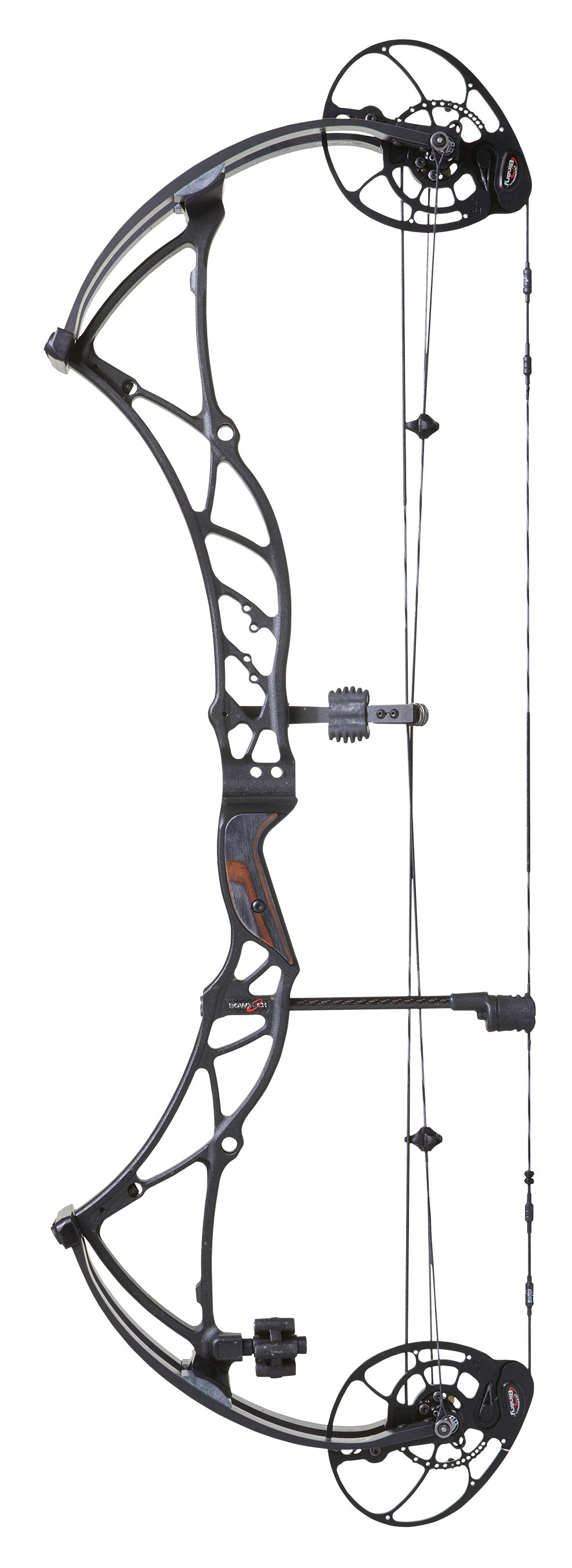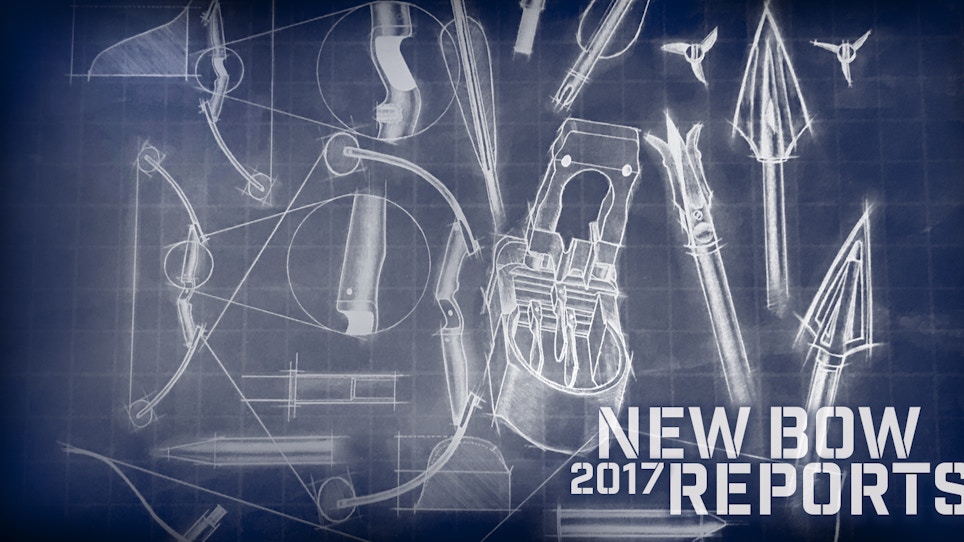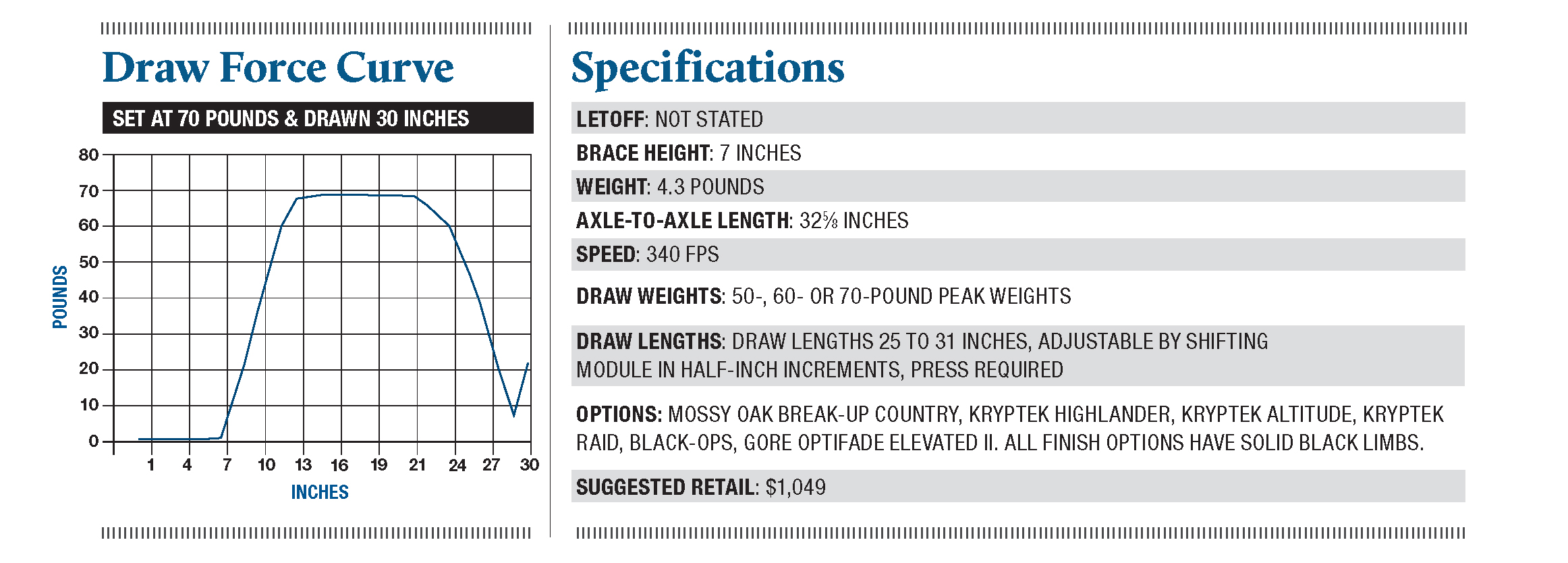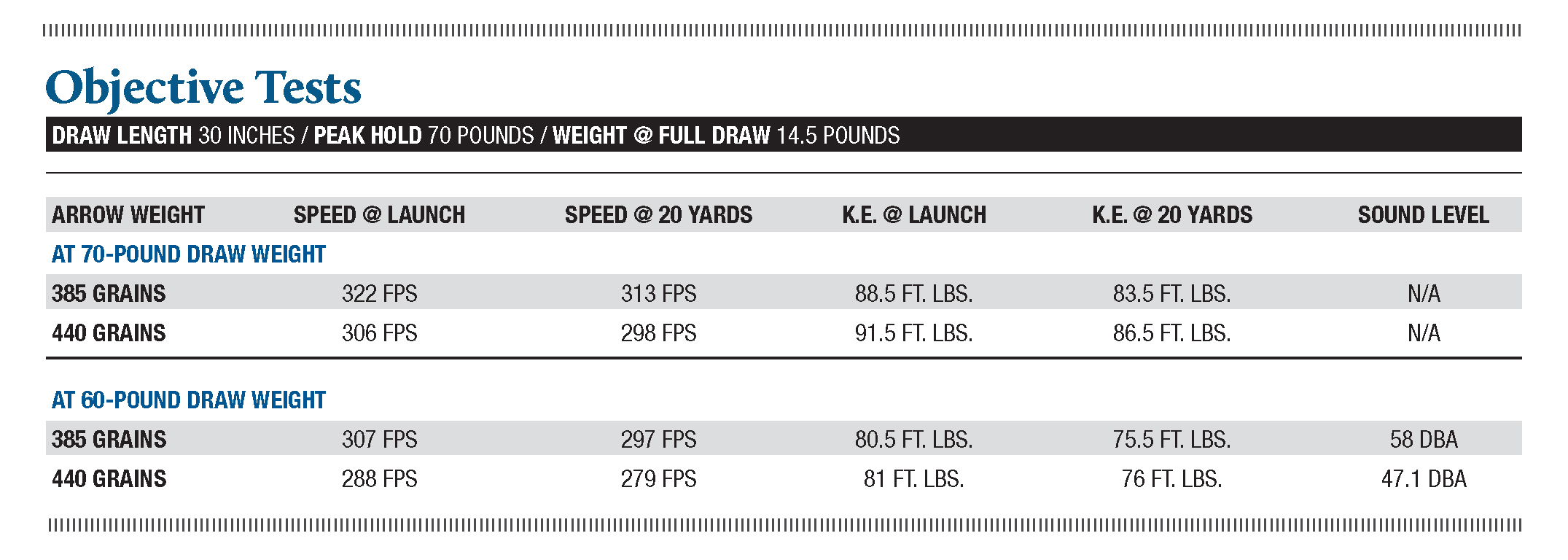When “tech” is part of your name, you’d better offer plenty of it. Bowtech does precisely that. In the case of the new Reign series of bows, a great deal of technology is employed toward producing a Goldilocks bow, i.e. a bow that is just right for just about any shooter. How is that possible? By making it customizable. The Reign bows are built around Bowtech’s Overdrive Binary Cams (slightly tweaked from last year) with the Powershift Technology Flip Disc introduced on last years BT-X, which allows shooters to switch between a Comfort setti ng, maximizing a smooth draw, and a Performance setting, maximizing speed. The switch is made easily by loosening three screws, rotating the disc to the desired setting, and retightening.
ng, maximizing a smooth draw, and a Performance setting, maximizing speed. The switch is made easily by loosening three screws, rotating the disc to the desired setting, and retightening.
Another bit of uniquely Bowtech technology featured on the Reign bows is the Micro Sync Dial, which allows the shooter to fine tune cam synchronization without the need to press the bow. Using it is as easy as loosening a screw, turning the dial (or dials) until the draw stops contact the cables simultaneously, and re-tightening the screws. As I mentioned in the report on last year’s BT-X, thanks to advancements in strings materials and construction, string creep does not occur with the frustrating regularity that was once the case. It does still occur, though, and is a major problem when it does. The Micro Sync Dial is a bit of user-friendly technology that will save many bowhunters a run to the local pro shop.
Although not strictly new, Bowtech’s CPX riser design merits a new look. It’s essentially a deflex design, with the grip in front of the riser’s pivot point (as opposed to the more common reflex design that places the grip behind the pivot point). The deflex design greatly reduces torque and increases stability at full draw. This enhances accuracy. The advantage of the reflex design is that, all else equal, it generates higher speeds. When it comes to bow design, though, all else is rarely equal. Bowtech’s CPX design puts a second contact point at the center of the limbs while simultaneously increasing the power stroke to result in a deflex design that achieves high speeds. It also decreases limb movement to reduce vibration and noise.
Some other Bowtech features are back as well. One of the most notably is the FLX-Guard cable guard. As the name suggests, it flexes to further reduce torque.
What's New?
Apart from some tweaks to the cam system for this year, the riser is brand new for this bow. Also new is the Outrigger Counterweight System that offsets the weight of accessories to provide better balance. The combination of all these technologies culminates in what Bowtech refers to as Smartbows. Those are high-tech, high-performance bows that can be tuned to the individual shooter.
In terms of this bow’s appearance, the fit and finish of the Reign 7 test bow was flawless. There are no machine marks or other visible flaws. In terms of durability, it passed the scratch test. Subjectively speaking this might be Bowtech’s best-looking bow to date. The test bow featured a Kryptic Altitude riser with black limbs, which the logos complemented nicely.
Shooting The Bow
I’ve yet to experience an issue accessorizing and tuning a Bowtech bow, and the Reign 7 was no exception. Setting center shot is as simple as getting the arrow equidistant from the riser at the front and the back of the shelf. A few (if any) tweaks after that should produce good arrow flight. I like the full ¼-size hex limb bolts used by Bowtech and some other manufacturers (less likely to get stripped). However, in this case limb bolts turned very smoothly with zero chattering, sticking or slipping. I do find it interesting, given all the user-friendly technology that enables any shooter to easily select between the Performance and the Comfort setting as well as to micro-tune cam synch, that changing draw length requires the bow to be pressed in order to move the module to the correct position.
At 4.3 pounds, the Reign 7 is a medium weight bow. On the Performance setting, the draw cycle is indeed smooth, building steadily to peak weight. At the valley, the cycle drops abruptly against a surprisingly solid (given cable stops only and no limb stops) back wall. The stop at the wall is sudden but not wrenching. The speed is evident at the shot but the Reign 7 is, as billed, very quiet for its speed. The bow pops forward slightly in the hand but there is no significant vibration.
After initially testing the bow on the Performance setting, I switched to the Comfort setting for comparison. At both 70 and 60 pounds, the 385-grain and the 440-grain arrow lost roughly 10 fps at the Comfort setting. The draw cycle was perceptibly smoother; whether the difference is worth the 10 fps in speed is of course a matter of personal preference.
It’s worth pointing out the Reign series includes the Reign 6. The Reign 6 lowers the brace height an inch to pick up roughly 10 fps. That gives speed a high end of 350 fps. The same option is available by dialing down to a comfort setting to sweeten the draw cycle at a cost of about 10 fps. Without these options, the Reign bows are fast, quiet, smooth-drawing bows. That would surely be very competitive in the compound hunting bow market. The options enable two bows to very efficiently cover a lot of ground and offer a speed/shootability ratio that should please the most discriminating bowhunter.








